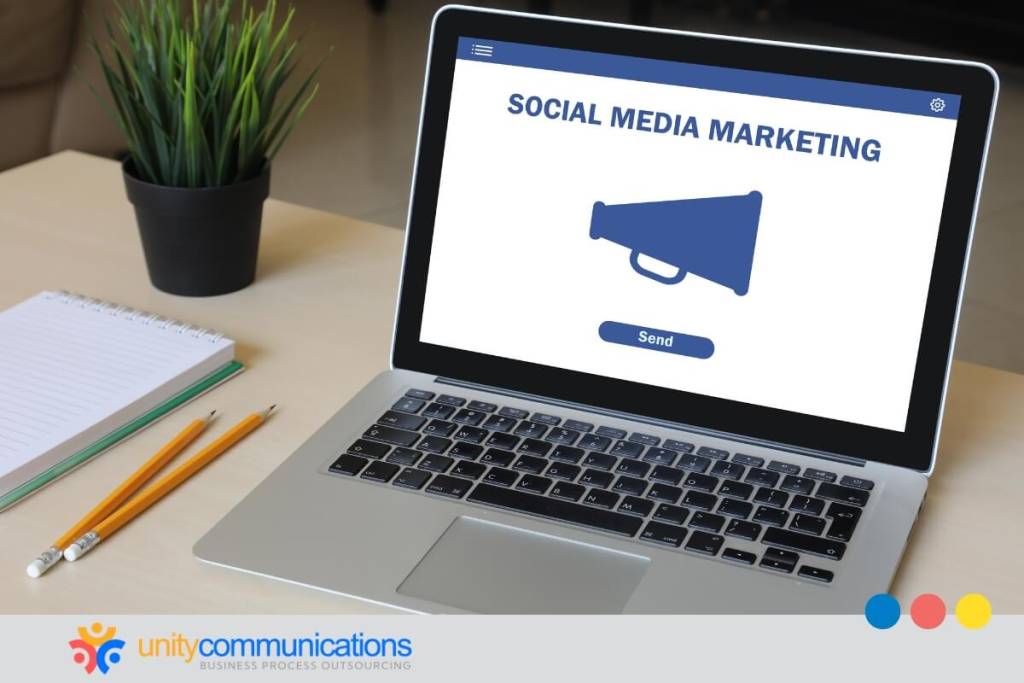Table of Contents
Outsourced e-commerce customer service, a type of business process outsourcing (BPO), is a common consideration among enterprises wanting to improve their operations and expand. Outsourcing provides numerous benefits, such as better support experience, more agile operations, lower costs, and increased customer loyalty.
But some companies are uncertain how to get started.
Read on for a list of advice, tips, and considerations that will help you outsource customer service the right way.
How To Outsource Customer Service

“What is business process outsourcing?” you might ask. It is subcontracting functions such as customer care to an outside service provider. Worldwide, companies outsource customer service to reduce workloads, handle tickets around the clock, save on costs, and increase capacity.
Outsourcing is an attractive solution, but many organizations don’t get it right. Doing your due diligence is essential before starting. It lets you understand how to make third-party vendors work within your context.
Get customer service outsourcing right by following our steps.
1. Establish Clear Objectives for Outsourcing
The first step in outsourcing customer support is to set clear goals. Why do you want to outsource customer service? According to a 2020 global outsourcing survey by Deloitte, businesses outsource for many reasons, such as:
- Cost reduction (70%)
- Flexibility (40%)
- Speed to market (20%)
- Access to tools and processes (15%)
- Agility (15%)
Apart from the reasons above, companies outsource to scale faster, improve customer experience, and achieve a competitive advantage. Outsourcing is a major decision, so think twice before working with a third-party service provider. Make sure you measure the impact of working with a BPO firm.
Outsourcing supports companies when ticket volumes and customer requests are overwhelming and unpredictable, and an in-house department can no longer manage the demand. Such companies might not have the budget and capacity to scale as necessary.
Your team might need additional customer service representatives to handle high ticket volume but not be able to invest in new office space, human resource (HR) costs, and extensive training. Make your goals clear, whatever they are, and ensure your team knows the long-term benefits of outsourcing.
2. Research Multiple Service Providers
BPO companies abound in the market. Some contact centers manage repetitive or high ticket volume, while others are better at in-depth situations. Picking the wrong firm is easy, disrupting the whole operation.
When you outsource customer service, take your time searching for viable providers to find the right one. You must consider various factors such as language needs, time difference, and minimum ticket volume.
Take note of the following factors when choosing a third-party service provider:
- Smooth business transition. This is a crucial factor to observe. A BPO company should streamline onboarding procedures and ensure a smooth transition from in-house to outsourced.
- Competitive pricing. One of the reasons companies outsource customer service is to save on costs. Look for a cost-efficient solution that fits your needs and budget without sacrificing the quality of service to your company.
- Cloud-based contact center software. Pick a firm with extensive knowledge and experience using cloud-based contact center software. Because everything is in the cloud, no information will be lost.
- Quality assurance and monitoring. A good service provider should have a designated quality assurance officer. The officer’s role is to conduct regular checks and monitor customer interactions to maintain the reliability and integrity of your brand.
- Reputation. Your brand reputation can make or break your business. Look for a provider with experience in different industries. Keep an eye out for client reviews that speak of their service quality.
- Capacity. Consider how many customer tickets you get and whether the third party can handle the workload. Ensure they can manage queries smoothly on your busiest and worst days.
- Engaged customer service agents. A BPO company must train agents to become excellent representatives knowledgeable about your business. Agents are the first line of contact, so they must be skilled.
- Presence. Are you running a multinational organization? Pick an external partner with offices abroad. They can accommodate your different markets and offer multilingual services.
- Accessibility. Your shoppers should never struggle to reach your customer service team. Pick a vendor whose agents are accessible using multiple channels such as chat, email, and social media.
Always keep your objectives in mind during your search. Your customer service BPO partner must meet your initial and overarching goals.
3. Invest in the Right Tools
You need collaboration tools such as Zoom or Slack to communicate with your BPO partner. Use a time-tracking app if your customer service representatives bill you by the hour. Time trackers calculate pay based on the hours worked.
You also need an additional customer support tool to automate processes. A contact center as a service (CCaaS) platform ensures flexibility for outsourcing customer services. Look for features such as:
- Round-the-clock, scalable, and flexible support
- Usability and intuitiveness
- Instant staff monitoring
- Quality management and call recording
- Advanced call deflection and routing
- Automated customer insights to track returns on investment (ROI)
- Reporting and analytics
- Smooth integrations with customer relationship management software and other important external systems
- Assistance for your transition
4. Identify Channels Your Customers Use To Contact You
After finding the right CCaaS tool, determine where buyers interact with you the most. Knowing which communication channels your tickets are coming from is critical. Sometimes businesses forget one channel, and customer inquiries pile up.
About 73% of millennial customers tend to use email when contacting brands. On the other hand, younger buyers use social media to reach businesses. Know your customer base and their preferences to stay in touch.
Some ways customers might want to contact you include:
- Email. Outsourcing email support makes sense because it remains a relevant channel for customer service and business-to-consumer communication. Billions of emails are sent every day. With email, you target both potential and existing customers.
- Social media. Many customers spend significant time browsing online, so social media has become integral to customer service. With social media, brands can easily get in touch with leads and customers across various demographics.
- Live chat. Many shoppers like using live chat due to its convenience. Customers only need to click the chat button on your website to start a conversation if they have any concerns. Live chat also assures customers that help is accessible if needed.
- Mobile app. Contacting you is easier if a direct messaging feature is integrated into your mobile app. The convenience of not having to leave the app creates a good impression of your brand.
- Phone calls. Many customers still prefer to talk to brands using phone calls. Live phone support is effective for handling urgent customer concerns. Voice representatives receive speech, proper tone, and etiquette training to manage calls well.
Sometimes customers want to talk on the phone; other times, they prefer to send an email. Letting existing and potential customers reach you on their preferred messaging channels improves their overall experience and satisfaction.
Outsource customer service to give your buyers the freedom to choose. Omnichannel support serves as a brand differentiator in a highly saturated market.
5. Set the Customer Service Standard for Your Brand
When you outsource customer service, you need to give your service provider clear guidelines for how to talk to your clients. Establish a standard that indicates how your brand communicates with the rest of the world when working with a customer support provider.
Guidelines let you control how third parties use your brand, ensuring customer interaction is of the highest standard. Brand guidelines outline how agents can use elements of your company and how they should be applied to guarantee consistency. This way, you can ensure all customer-facing interactions reflect your image and values.
Brand guidelines become crucial as your business expands and you hire more third-party service providers for projects. Even when customer service representatives come and go, the established rules ensure that everyone on the team is on the same page regarding brand identity.
6. Check for Accessible and Knowledgeable Agents
While technology is important in providing excellent customer care, it is not enough. Customers want to talk to professional, high-quality, and caring agents. A good tip for outsourcing customer service is to check whether skilled and knowledgeable agents are available.
A BPO company must ensure employees learn about your brand and products quickly to provide professional customer service. Technology options such as interactive experiences and chatbots offer enough front-line support. But many customers still want to talk to human agents.
Reports show that:
- 69% of customers prefer talking to a live agent;
- 54% use email; and
- 46% prefer live chat.
Knowing these numbers, you cannot overemphasize the importance of working with skilled agents. Outsource customer service only to a provider that delivers trained and experienced staff. It is also better if the vendor uses a distributed workforce, which gives them more options, improves business agility, and cuts costs.
After the pandemic, dealing with customers became more complicated and thus required a higher skill level. While under lockdown, certain contact centers received more tickets. A staff of competent agents is vital in handling increased demand.
You need employees who can spot pain points, act quickly, and use the right tools to solve customer problems. Agents should also empathize with a caller’s situation. Your team should weave empathy into the fabric of each interaction to better connect with customers.
7. Decide Between Offshore and Onshore Outsourcing
While outsourcing offers many benefits, it also risks a poor customer service experience, especially if you select the wrong BPO company. This is often the case when a business outsources offshore without conducting thorough research.
Offshoring attracts many organizations due to its low cost. But it comes with other problems, such as cultural differences, miscommunication, technological differences, and data security. Cost is the most important factor, but you should not sacrifice good customer service to save money. Your clients should be your top priority.
Consider onshoring if your clients are sensitive to offshore customer support. But if you are cost-driven, outsource customer service to a distributed work model provider. This way, you get access to cost efficiency and business agility.
8. Consider Security and Legal Risks
Review your internal security before letting a third-party vendor access your data. Identify which customer information is sensitive, and restrict access to sensitive data such as health records and credit card details.
Lastly, have your legal team check the contract before signing any binding documents with the customer service company.
9. Evaluate Customer Service Performance
Evaluating your customer care service lets you improve performance and processes. Trends help you successfully fulfill customer demands and boost satisfaction. Identifying trends thus helps you make wiser decisions about your procedures and policies.
For example, you can track first contact resolution (FCR). This metric gauges customers’ happiness, with higher ratings alluding to more satisfied clients. High FCR ratings can also signify customer loyalty.
FCR also provides insight into your staff’s ability to understand and address issues on the first contact. Multiple interactions before resolution tend to show improper identification of the problem or inaccurate solutions. Time is wasted, and the actual resolution is delayed.
Tips for Outsourcing Customer Service

Outsourcing can be intimidating if you have never done it before, but it does not have to be. Take a look at these tips to help you get started with outsourced customer service.
1. Be Customer-centric
Nobody knows your clients as you do. Your company interacts with them most often and knows what makes them tick. You also understand their expectations of you in terms of customer service and what they want you to improve upon.
Use this information when picking the outsourcing provider to hire. The decision depends on the experience you want your customers to have.
Find a vendor that shares your communication style and values because you do not want to deviate from what you have built. You want a smooth transition where customers see the third-party team as part of your company.
2. Ensure Proper Communication and Transparency
The key to successful customer support outsourcing is proper communication. Your offshore team needs to know what is going on in your organization to represent your brand more accurately.
For instance, if you want to include inventory management outsourcing, the partner must be capable of the service and receive training before starting. The last thing you want is a customer support team that does not understand your business; it will reflect poorly on you.
3. Keep Costs Manageable With Flexibility
Being flexible means being able to adapt to different situations without letting them affect the quality of your customer service. Flexibility is a differentiating factor because it ensures that the business keeps going no matter what.
Using bespoke, pay-as-you-go models provides better flexibility. Your service provider can offer customized plans that require you to pay only for what you use and scale as needed. Plans like this guarantee that costs are manageable and controllable—you need not keep resources you will not use during the off-season.
Distributed plans also do not lock you into contracts because you pay only for what you use. You can keep an in-house customer service team and simultaneously work with a BPO company if you want to. This offers the quality and flexibility you are looking for in customer support.
4. Think About Customer Care as a Growth Strategy
Today’s customer care goes far beyond daily interactions. The ever-changing consumer behavior and business landscape put pressure on customer support functions. But your team should not break with the growing demand. Instead, transform your processes and capitalize on alternative models and technologies.
Your customers are your top priority, so you should strive to provide a quality experience. Customer-centric businesses profit more than those that are not; most customers think excellent customer service is essential to stay loyal to a brand.
How Much Does It Cost To Outsource Customer Service?

When outsourcing customer service, you pay $5 to $12 per agent on average, but the complete breakdown of the price depends on the BPO provider. When you think about the benefits of outsourcing customer support, you will see that most services are priced reasonably. Typically, outsourcing costs are computed based on some factors, including:
- Number of seats. The total number of seats you need is a huge player in the pricing. With this number, your partner determines how many representatives and equipment you need for the operation.
- Agent expertise. Outsourcing companies train their agents equally, regardless of whether they are new hires or old staff. But the more skilled and experienced agents, the higher the rates.
- Known languages. Uncommon languages in your provider’s country of operation will have a higher price than universal and local languages. The demand for agents fluent in a foreign language is high, so they are priced accordingly.
- Length of engagement. The length of the contract also affects the service price. The longer the engagement, the more competitive the rates. Shorter contacts tend to have higher fees.
- Labor market rate. Labor supply and demand also influence the final price. The rate will be high if there are more employers than agents in the market.
Local laws in the area where your service provider is based also affect the total cost of outsourcing customer service. The final price includes extra services such as business emergency plans. For example, if you want to outsource data entry services, you will have to pay more.
The Bottom Line
Outsourcing is a practical way to improve customer service. Still, it works well only if you choose the right service provider.
When outsourcing customer service, ensure your BPO partner offers service flexibility that lets you scale as necessary. They must have access to high-quality and knowledgeable agents. Lastly, allocate a budget to ensure manageable and predictable costs.
Find a service provider that shares your goals and values for customer service. Let offshore BPO providers such as Unity Communications deliver bespoke customer service that caters to your unique needs, letting you focus on growing your business.
Contact us now to find out more about how we can help.



